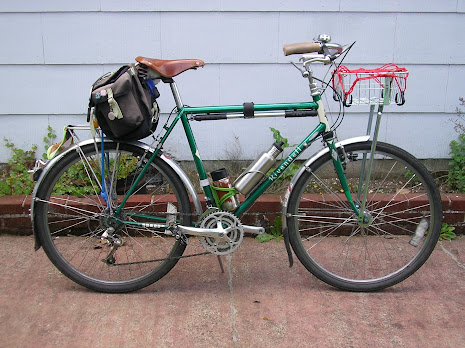I see many more e-bikes on the streets these days.
A shocking number of my friends who used to ride human-powered bikes as primary transportation have switched to e-bikes.
Some of them genuinely need the electric assist to get up hills more often as they've aged.
Others simply like the convenience of riding without having to sweat so much, or ride farther than legs alone could handle.
That's great for them.
An e-bike starts at around $3,000 for something decent and durable. The average e-bike owner spends upwards of $250 a year on maintenance and repairs.
A safe, functioning pedal-powered bicycle can cost as little as $25 used. In some cases, I've seen ads for FREE bikes that people no longer ride. The average regular bike owner spends between $50 and $75 a year on maintenance and repairs, and most regular bike owners can fix their own flats and adjust their own brakes,
E-bikes discourage self-sufficiency. You can't easily fix a flat on an e-bike by yourself, at home or on the road, without using Slime-in-a-can or Fix-a-Flat, or some other unsustainable and noxious chemical aid. Shops that do fix e-bike flats charge upwards of $30 for the service, plus parts. Many newer e-bikes are belt-driven, and there is NO way to deal with a drive belt on the road. You need special tools that cost more than the belt itself.
Now, to be fair, self-sufficiency for bicycle riders was being discouraged long before e-bikes blew up. While I worked at Citybikes, the number of bike riders actually willing to get their hands dirty doing basic upkeep was already dropping, due to demographic and generational shifts that reflected decreasing self-sufficiency across society. But the steep rise in e-bike ownership definitely accelerated that shift, especially in the last four or five years.
I no longer work in the bike industry. Arthritis has done a serious number on my hands. But if I were stuck by the side of the road I could still fix a flat and get home. I've taken steps to ensure that, which include carrying a patch kit, levers and a pump on my bike and choosing to ride 26"/559 wheels because those tires are easier to remove and reinstall. Simple stuff.
This is a rambling rant, inspired by a recent BikePortland.org article about the rise of e-bike ownership and rising demands for electric-powered car infrastructure.
I certainly can't afford to buy an e-bike. But if I could, I wouldn't. And I won't ever own one.
I think self-sufficiency is good for society and good for communities, and technology that discourages both is bad for us. I'd rather fix my own flats on a bike that's simple and efficient, than have to rely on someone else to maintain my bike for me.
Bicycle used to be simple and elegant technology. I will fight the good fight to keep mine going for as long as I can.
(My Centurion Super Le Mans. Eugene, Oregon 1997. I learned how to repair and rebuild bicycles using this as my laboratory, and rode it until it was totaled in a collision. Then, I used my skills to build up a replacement bicycle from parts.)
(The bike I ride now. Still simple and elegant, and repairable at home.)



3 comments:
My wife and I are considering buying one for her. We like riding together, but I’m a stronger rider, and an e-bike would let us do longer, more interesting rides than we can do together now in the time we have for riding. I’m a decent amateur mechanic, so I think I can handle the basics. A tandem is not an option for us.
Hey, if it works for your situation and you can handle the repairs, go for it.
Honestly, most of the e-bikes I've seen up close have fairly fussy bits, odd wheel and tire sizes and hub/axle situations that would give me pause if I had to fix a flat on the road. Happy riding!
I live on top of a giant hill and have a huge amount of (wiggly human) cargo to carry. Getting an e-bike made the difference for me between being a cyclist and being a car driver. I appreciate your sentiment, but as someone with a big family and a disability that doesn’t allow me to be lance armstrong on a cargo bike, I’ll keep my e-bike and keep being a member of the cycling community, please and thank you.
The fact that we are gatekeeping the type of bike folks ride (and this is coming g from a veteran mechanic) doesn’t get more people out of cars. My ebike rides like a normal bike, has normal parts, and represented both a huge expense and a huge savings in not needing a car for daily use. My children don’t beg to be ridden to school in the car…
Post a Comment